Choosing the right shoelace size is crucial for comfort and shoe performance. Too short or too long laces can cause discomfort and affect functionality. This guide helps you determine the perfect fit, ensuring your shoes stay secure and look great.

Factors Determining Shoelace Size
Shoelace size is determined by several key factors, including the number of eyelets, shoe style, foot width, and brand recommendations, ensuring a proper fit and functionality.
Number of Eyelets
The number of eyelets on your shoes is a primary factor in determining the correct shoelace length. Shoes with more eyelets require longer laces to ensure proper lacing. For instance, 6-eyelet sneakers need shorter laces compared to 8-eyelet boots. Each eyelet adds to the total length needed, so counting them helps in selecting the right size. This simple yet essential detail ensures a snug, comfortable fit and prevents laces from being too tight or too loose.
Shoe Style and Design
Shoe style and design significantly influence the required lacing length. For example, athletic shoes often need durable, longer laces for secure fit, while dress shoes may require shorter, sleeker laces. Boots, with their higher eyelet count, demand even longer laces to wrap around the shaft. Additionally, certain designs like no-tie or elastic laces have specific length requirements. Understanding your shoe’s style helps in choosing laces that enhance both functionality and aesthetic appeal, ensuring a perfect blend of comfort and style.
Foot Width and Shape
Foot width and shape play a crucial role in determining the ideal shoelace length. Wider feet may require slightly longer laces to accommodate the extra space, ensuring a comfortable fit without excessive pressure. Conversely, narrower feet may need shorter laces to prevent excessive slack. The shape of the foot, such as high arches or flat feet, can also influence lacing needs; Properly fitted laces ensure even pressure distribution, enhancing comfort and support for various foot types and shoe styles.
Brand Recommendations
Popular brands like Nike, Adidas, and Converse offer tailored shoelace options, ensuring compatibility with their shoe designs. Many brands provide size charts to help select the perfect laces. Consider brands known for durability and comfort, such as New Balance or Vans, for everyday wear. Specialty brands cater to specific needs, like orthopedic shoes. Always check customer reviews and brand guidelines for the best fit. This ensures optimal performance and longevity of your shoelaces, aligned with your footwear preferences and lifestyle.
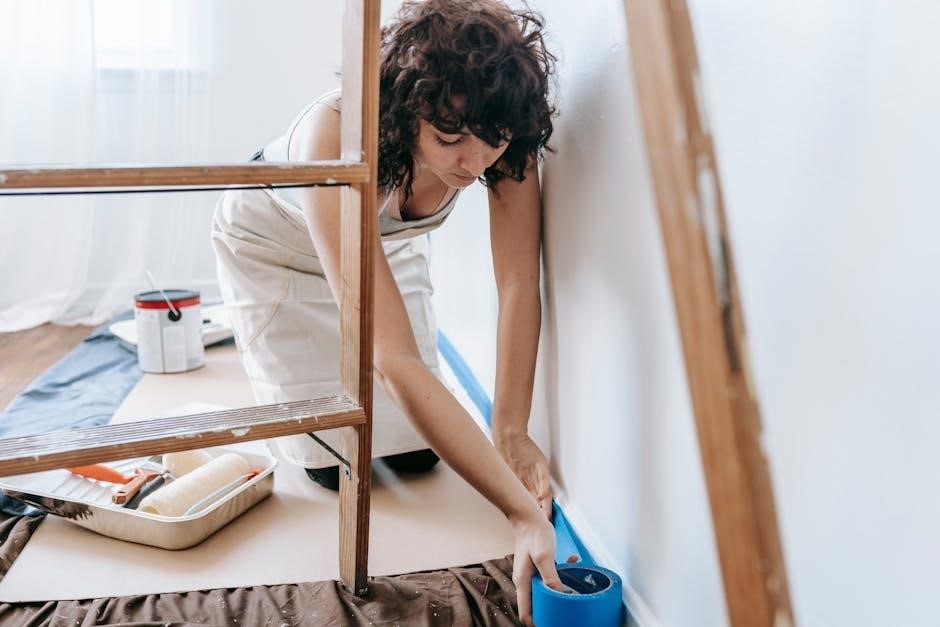
How to Measure Shoelace Length
To measure shoelace length, remove the laces and lay them flat. Measure from tip to tip using a ruler or straight edge. Standard lengths typically range from 27″ to 45″ for most shoes.
Manual Measurement Techniques
For manual measurement, remove the shoelaces and stretch them flat on a smooth surface. Measure from one tip to the other using your hands or a straight object. Align the laces with a familiar object, like a pen, to estimate length. This method works well when a ruler isn’t available. Ensure the laces are straight to avoid inaccuracies. Average lengths range from 27″ to 45″, depending on shoe type and eyelet count. This technique provides a quick, practical solution for estimating shoelace size.
Using a Ruler for Accuracy
For precise measurement, lay the shoelace flat and align one end with the ruler’s starting point. Measure from tip to tip, ensuring the lace is straight. Note the length in inches or centimeters. Common lengths range from 27″ to 45″, varying by shoe type and eyelet count. This method ensures accuracy, helping you choose the perfect fit. Always double-check measurements to avoid errors. Using a ruler is the most reliable way to determine shoelace size accurately.
Online Tools and Calculators
Online tools and calculators simplify finding the ideal shoelace length. Many websites offer calculators requiring shoe type, brand, or eyelet count. Some tools even allow uploading photos or entering specific measurements. These resources save time and reduce guesswork, providing precise recommendations. They often include charts or guides for various shoe styles, ensuring accuracy. Users can quickly determine the perfect lace length without manual measurements, making the process efficient and stress-free for anyone, regardless of their familiarity with shoelace sizing.

Common Shoelace Lengths by Shoe Type
Shoelace lengths vary by shoe type, with athletic shoes needing longer laces, while dress shoes require shorter ones. Casual and sandals fall in between, ensuring proper fit and functionality.
Athletic Shoes
Athletic shoes typically require longer shoelaces due to their numerous eyelets, which provide enhanced support and stability during physical activities. Standard lengths range from 45″ to 54″, with high-top sneakers sometimes needing up to 60″ for optimal security. The laces should be durable to withstand frequent use and harsh conditions. Proper fit is crucial to prevent tripping and ensure comfortable performance during sports and intense workouts.
Casual and Daily Wear
For casual and daily wear, shoelace lengths typically range from 30″ to 45″. This size works well for most low-top sneakers, loafers, and casual boots. The number of eyelets and shoe design influence the ideal length, with shorter laces suiting shoes with fewer eyelets. Aim for a comfortable fit that avoids excess lace material, ensuring a neat and secure closure. This range balances practicality and style, making it suitable for everyday use across various casual shoe types.
Dress Shoes
Dress shoes typically require shoelaces ranging from 24″ to 32″. This length suits most oxfords, derbies, and loafers, which have fewer eyelets. The shorter laces ensure a sleek appearance while maintaining a secure fit. Properly sized laces avoid bulkiness, keeping the shoe looking polished and professional. This range is ideal for formal occasions, ensuring comfort and style without excess lace material. It balances practicality and aesthetics, making it perfect for everyday formal wear.
Sandals and Open-Toe Shoes
Sandals and open-toe shoes often require shorter shoelaces, typically ranging from 18″ to 21″. This shorter length accommodates fewer eyelets and prevents excessive lacing material, which can create bulk. The compact design ensures a clean look while maintaining comfort and functionality. These laces are ideal for casual wear, offering a snug fit without compromising style. They are also easier to manage, making them practical for everyday use in warmer weather or relaxed settings.
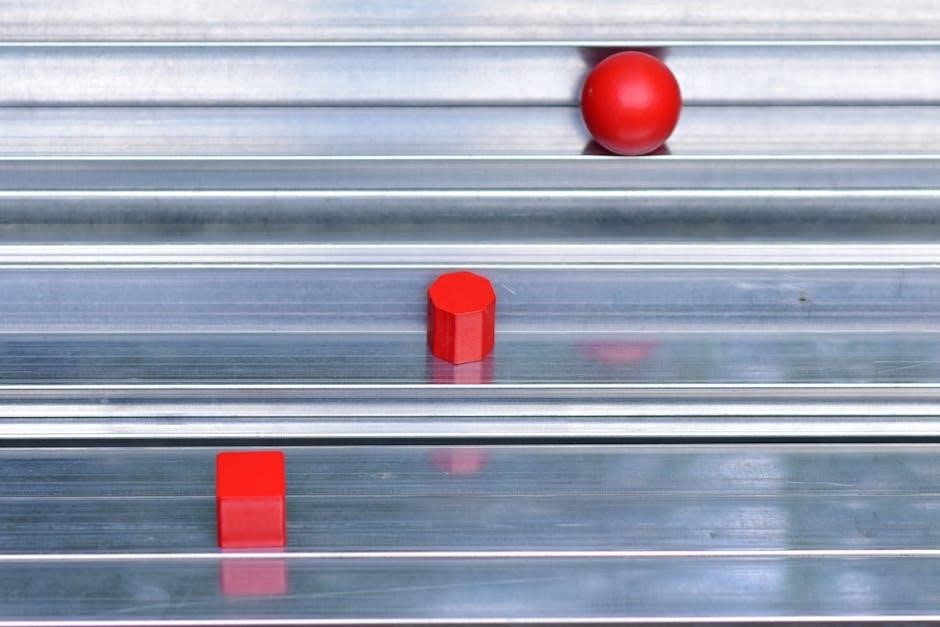
Special Considerations
Special considerations include factors like shoe type, foot shape, and personal comfort, ensuring the right fit and functionality for unique needs such as orthopedic support or seasonal wear.
Shoelaces for Children
Choosing the right shoelaces for children involves considering safety, durability, and ease of use. Opt for shorter lengths to prevent tripping and ensure secure lacing. Elastic or Velcro options are ideal for younger kids who struggle with tying. Durable materials like nylon or polyester withstand heavy wear. Bright colors or themed designs can make lacing more engaging. For orthopedic or special needs shoes, consult brand guidelines to ensure proper fit and support. Regularly check and replace worn laces for safety and comfort.
Orthopedic and Supportive Shoes
Orthopedic and supportive shoes often require longer or reinforced shoelaces to accommodate additional features like stiffeners or orthotic inserts. These laces must provide secure tightening to maintain proper foot alignment and prevent discomfort. Look for laces with enhanced durability to withstand the added stress. Some brands offer specialized lacing systems designed for orthopedic needs, ensuring optimal support and stability. Always consult the manufacturer’s guidelines for specific recommendations, as improper lacing can compromise the shoe’s therapeutic benefits and cause injury.
Seasonal and Specialty Shoes
Seasonal and specialty shoes, such as winter boots or hiking shoes, often require longer shoelaces due to their taller designs or unique lacing systems. Waterproof or insulated shoes may need durable, weather-resistant laces to maintain performance. Style also plays a role, as some seasonal shoes feature decorative lacing. Always consider the shoe’s intended use and consult the manufacturer’s recommendations for the ideal lace length to ensure functionality and comfort in varying conditions or activities.
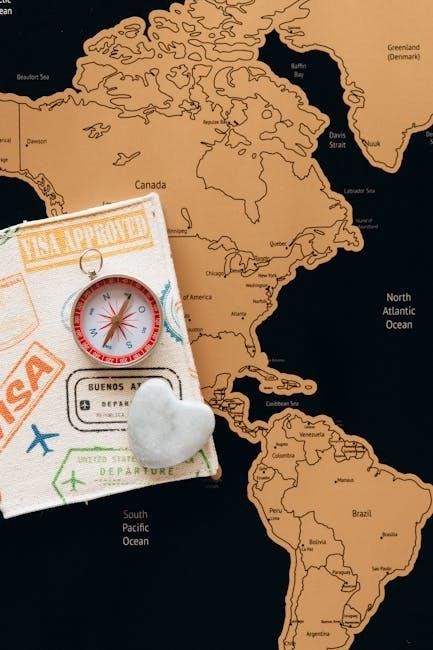
Materials and Durability
Shoelaces are made from materials like nylon, polyester, or leather, offering durability and flexibility. Specialty laces may feature moisture resistance or reflective properties for enhanced performance and safety.
Common Materials Used
Shoelaces are typically made from durable materials like polyester, nylon, or cotton. Polyester is known for its strength and resistance to stretching, while nylon offers flexibility and moisture resistance. Cotton laces provide a soft, natural feel but may lack durability compared to synthetic options. Many laces are blends of these materials to balance strength, comfort, and cost. Leather laces are also common, offering a premium look and feel. The choice of material often depends on the shoe type, activity level, and personal preference.
Specialty Materials
Specialty materials for shoelaces include reflective yarns for visibility, waterproof options like Gore-Tex, and elastic laces for convenience. Reflective laces enhance safety in low-light conditions, while waterproof materials resist moisture and extend durability. Elastic laces are ideal for shoes that require easy on-and-off functionality without constant tying. Some specialty laces also feature antibacterial coatings or odor-resistant treatments, catering to specific needs like athletic performance or hygiene. Customizable materials, such as metallic or neon threads, add style and personalization.
Eco-Friendly Options
Eco-friendly shoelace options are crafted from sustainable materials like organic cotton, recycled polyester, and hemp. These materials reduce environmental impact by minimizing the use of non-renewable resources and harmful chemicals. Organic cotton is grown without synthetic pesticides, while recycled polyester transforms plastic waste into durable yarns. Hemp and bamboo are renewable resources that grow quickly and require less water. Some eco-friendly laces also feature biodegradable components, ensuring they decompose naturally. These options support environmentally conscious consumers without compromising on quality or style, offering a responsible choice for everyday wear.
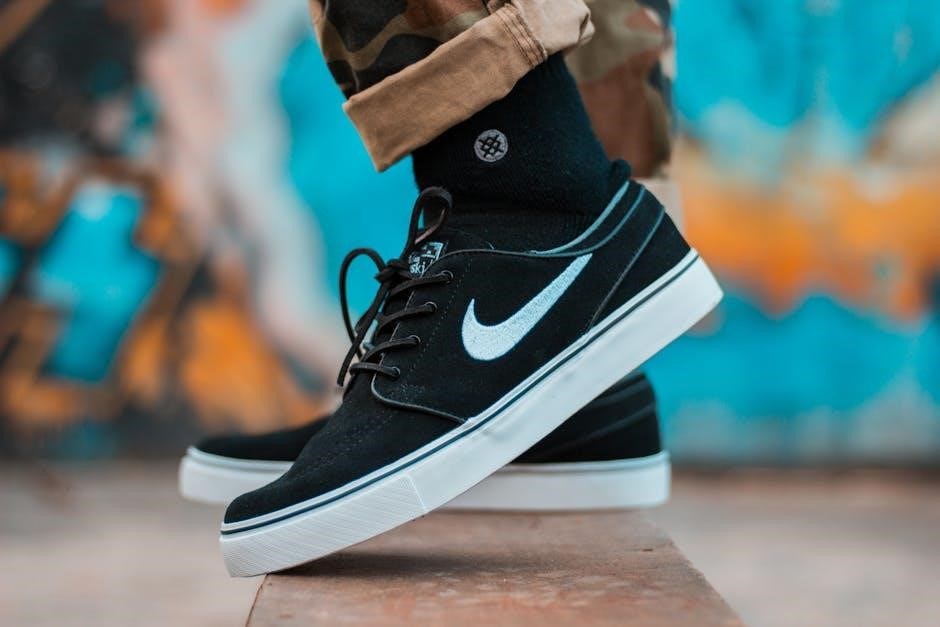
Tools and Resources
Essential tools include rulers, measuring tapes, and lace-cutting scissors. Online resources provide calculators, guides, and tutorials to help determine the perfect shoelace length
Measure and Cut Tools
Accurate measurement is key to finding the right shoelace length. Use a flexible measuring tape or a ruler to gauge your shoe’s eyelet distance. Sharp scissors or utility knives are ideal for cutting laces to size. For precision, consider using a lace-cutting tool or a craft knife with a straightedge. Optional tools include a cutting mat for stability and a stop block for consistent lengths. These tools ensure clean cuts and prevent fraying, making the process efficient and professional.
Lacing Assistants and Accessories
Lacing assistants like lace locks and elastic laces simplify the process, while accessories such as lace organizers and travel cases keep your shoelaces tidy. Decorative tips and charm clips add a personal touch. These tools enhance functionality and style, ensuring your laces stay secure and look great. They are especially useful for maintaining tight lacing without frequent adjustments, making them ideal for active lifestyles or special occasions.
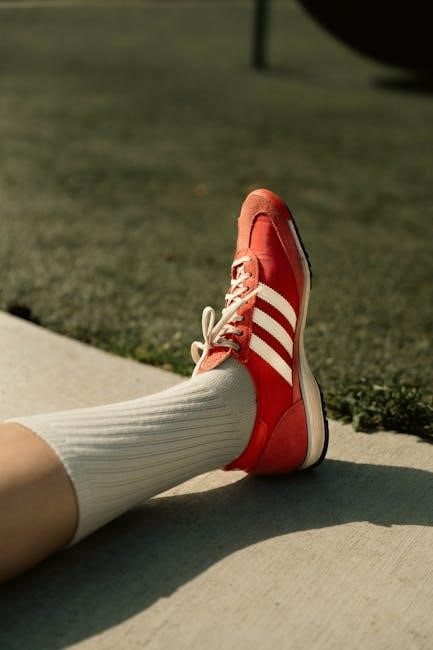
How to Choose the Right Size
Measure your shoe’s eyelet count and foot width, consider activity type, and check brand size charts for the perfect fit to ensure optimal comfort and durability.
By Shoe Type
Different shoe types require specific lace lengths. Athletic shoes often need longer laces (45-60 inches) due to more eyelets. Casual shoes typically use 36-45 inches, while dress shoes prefer shorter laces (30-40 inches) for a sleek look. Sandals or open-toe shoes may use even shorter laces (25-35 inches). Always check the manufacturer’s recommendations for your specific shoe model to ensure the best fit and functionality.
For Personal Comfort
Personal comfort plays a crucial role in choosing shoelace length. Laces that are too tight can cause discomfort, while overly loose laces may lead to poor support. Consider your foot shape and activity level. Wider feet or high arches may require slightly longer laces for ease. Tying style also matters—some prefer a snug fit, while others like a looser feel. Balancing these factors ensures optimal comfort and performance for daily wear or specific activities.
Brand and Style Preferences
Brand and style preferences significantly influence shoelace size selection. Luxury brands often opt for longer laces to accommodate intricate designs, while athletic brands prioritize functionality with shorter, durable options. Sneaker styles may require laces that match the shoe’s aesthetic, such as flat or wax laces. Some brands offer customizable lengths to suit individual tastes. Always check the brand’s sizing chart to ensure compatibility with your shoe’s eyelet configuration and desired lacing style for a perfect fit.
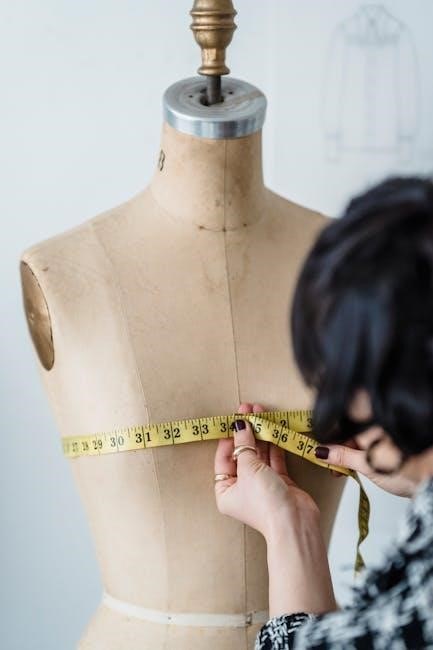
Tips for Maintaining Shoelaces
Regularly clean shoelaces with mild soap, avoid extreme heat, and store them away from direct sunlight to prevent fading. Trim frayed ends to maintain appearance and functionality.
Cleaning and Care
Regularly clean shoelaces to maintain hygiene and durability. Hand wash fabric laces with mild soap and warm water, gently scrubbing with a soft brush. For synthetic laces, a damp cloth can remove surface dirt. Avoid bleach or harsh chemicals, as they may damage materials. Air-dry laces away from direct sunlight to prevent fading or shrinkage. For odour control, soak laces in vinegar solution before rinsing. Brush off loose dirt regularly to prevent buildup and extend lifespan.
Preventing Wear and Tear
To prevent wear and tear, avoid over-tightening shoelaces, as this can cause stress on the material. Use lace locks or stay tied devices to reduce friction. Regularly trim frayed ends to prevent unraveling. Avoid dragging laces on rough surfaces, as this can cause abrasion. Replace laces when signs of excessive wear, such as thinning or breakage, appear. Store shoes in a cool, dry place to minimize moisture-related damage to laces.
Proper Storage
Properly storing shoelaces helps maintain their quality and prevents tangling. After cleaning, allow laces to air-dry completely before storing. Use small, airtight containers or zip-top bags to keep them dry and organized. Avoid folding or creasing laces, as this can weaken the material. Store them separately from shoes to prevent stretching. For convenience, label each container by lace length or shoe type. Keep them away from direct sunlight and heat sources to prevent color fading or damage.
Selecting the right shoelace size is crucial for comfort, durability, and proper fit. By understanding factors like shoe type, eyelet count, and personal preference, you can avoid common issues like laces that are too short or too long. Regular maintenance, such as cleaning and proper storage, extends their lifespan. Whether for athletic, casual, or dress shoes, choosing the correct size ensures optimal performance and style. Always consider brand recommendations and measure carefully for the best results.

Frequently Asked Questions
Common queries about shoelace size guide address concerns like proper fit, durability, and style for various shoe types and preferences.
Why Shoelace Size Matters
The right shoelace size ensures proper fit, comfort, and support. Incorrect lengths can lead to discomfort, poor shoe stability, or difficulty lacing. Optimal sizing enhances performance, especially for athletic activities, and maintains shoe integrity. Ill-fitting laces may cause tripping hazards or premature wear. Choosing the correct size tailors the shoe to individual needs, improving both functionality and style. Proper sizing is crucial for comfort and durability, making it a key factor in shoe customization and satisfaction.
Measuring Without a Ruler
If a ruler isn’t available, you can estimate shoelace length by comparing it to known objects. For example, a standard sheet of paper is 11 inches long, providing a reference point. Lay the lace flat and stretch it to avoid shrinkage. Use the shoe itself as a guide by threading the lace through the eyelets and adjusting to desired tightness. This method ensures a functional fit without precise tools, relying on visual and tactile cues for accuracy.
Handling Too Long Shoelaces
If shoelaces are too long, they can be trimmed to the desired length using scissors. To prevent fraying, melt the cut ends with a lighter or use lace aglets. Alternatively, tuck excess lace into the shoe or secure it with a small elastic band. For a neater look, try the crisscross lacing method to minimize visible length. Properly managing long laces ensures comfort, safety, and a polished appearance, while preventing tripping hazards or unwanted loosening during wear.
Choosing for Children
When selecting shoelaces for children, prioritize durability and ease of use. Opt for laces made from sturdy materials like nylon or polyester to withstand rough play; Elastic or bungee laces are ideal for younger kids, as they stay securely tied. For older children, consider laces with fun designs or colors to match their preferences; Ensure the length is appropriate for their shoe size to prevent tripping. Soft, rounded tips can enhance comfort and safety, making them suitable for growing feet.

